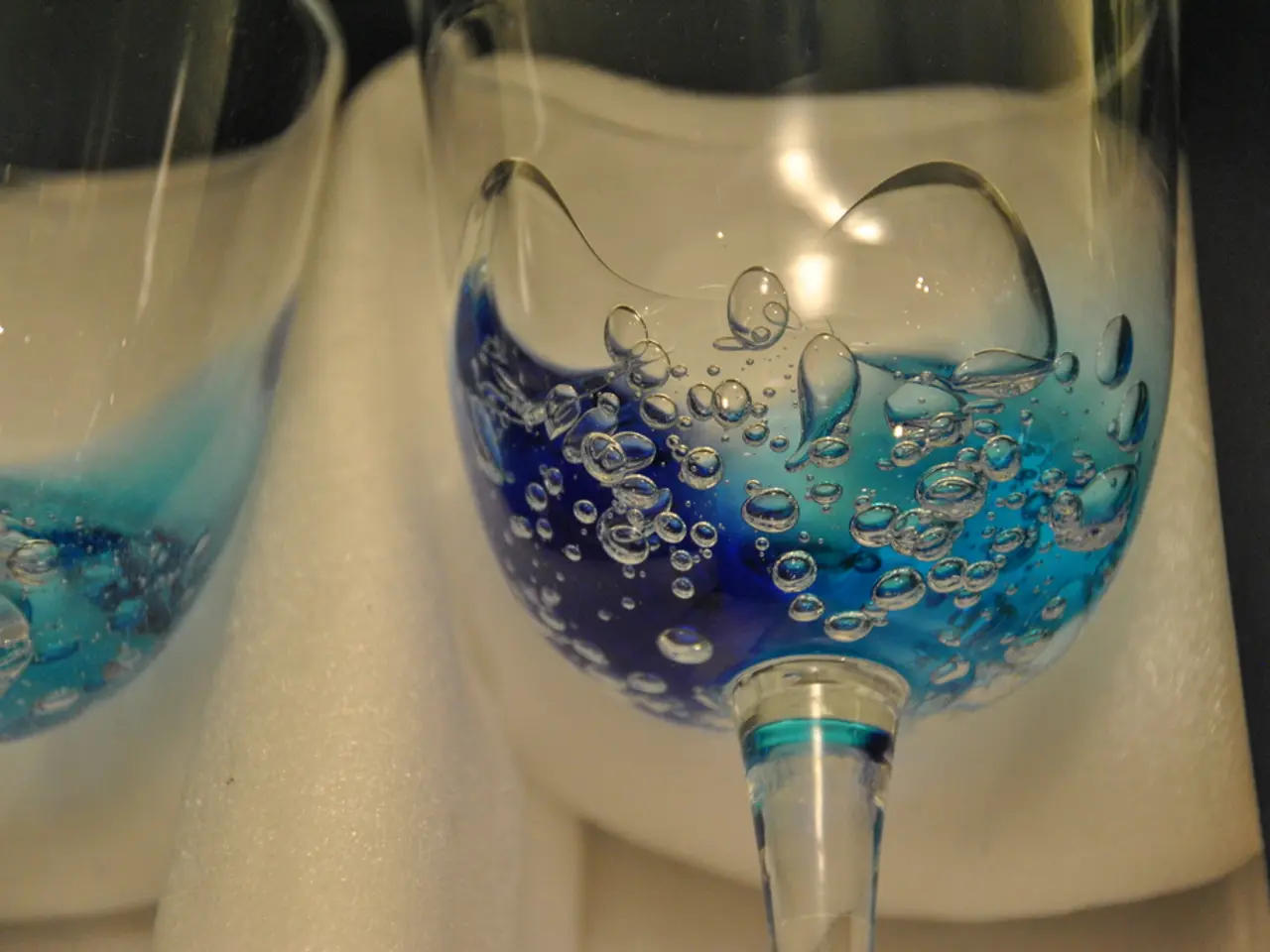Macular Degeneration Causing Fluid Buildup: Symptoms and Remedies
In the fight against vision loss, a leading adversary is exudative macular degeneration (wet AMD), a severe form of AMD that accounts for around 10% of cases but results in 90% of cases of legal blindness. This condition is characterised by abnormal blood vessels growing behind the macula, which can leak fluid and blood, leading to scarring of the macula and rapid vision loss.
Fortunately, advancements in medical technology have led to the development of intravitreal anti-VEGF injections, which have become the gold standard for managing exudative macular degeneration. These injections inhibit abnormal blood vessel growth and leakage, helping to slow or prevent vision loss. The main anti-VEGF drugs used include ranibizumab, bevacizumab, aflibercept, brolucizumab, and faricimab.
Treatment protocols typically start with monthly injections for three months, followed by either "pro re nata" (PRN, as-needed) dosing based on disease activity visible on Optical Coherence Tomography (OCT) scans or a "treat and extend" approach, where injections are given at gradually extended intervals if the disease remains stable. Faricimab is notable for allowing extended dosing intervals (up to every 16 weeks) soon after the initial treatment phase, reducing the injection burden.
While these treatments have significantly improved the management of exudative macular degeneration, they are not without their challenges. Rare side effects include blurred vision, swelling, discharge, pain, and discomfort, and they may also cause cataracts and bleeding in the eyes.
Looking forward, there is hope on the horizon with the development of new treatments involving gene therapy. As research continues to progress, these advancements may offer even more effective and less invasive treatment options for those living with vision loss.
For individuals living with vision loss, vision rehabilitation can help them learn coping strategies, such as modifying their environment and optimising the use of their peripheral vision. Support groups can also provide resources and a space to share experiences.
If you have dry AMD and notice any worsening of your symptoms, it is crucial to seek urgent medical attention. Dry AMD is typically subtle and includes a blurry spot in the center of the visual field that may worsen and become more prominent and darker, potentially leading to a complete loss of central vision.
Regular comprehensive eye exams are essential for people with AMD to maintain the best possible eye health. Early detection and treatment are key to preserving vision and improving outcomes.
References:
- American Academy of Ophthalmology. (2021). Wet Age-Related Macular Degeneration. https://www.aao.org/eye-health/diseases/wet-age-related-macular-degeneration-wet-amd
- National Eye Institute. (2021). Age-Related Macular Degeneration (AMD). https://nei.nih.gov/health/maculardegen/armd
- Macular Society. (2021). Faricimab. https://www.macularsociety.org/living-with-macular-disease/treatments/faricimab/
- Allergan. (2021). VABYMORE (faricimab-vprl). https://www.vabymore.com/
- Heier JS, et al. Faricimab for neovascular age-related macular degeneration. N Engl J Med. 2020;383(23):2241-2252. doi:10.1056/NEJMoa2028904
- The naive assumption that vision loss is inevitable is challenged by the fight against exudative macular degeneration (wet AMD).
- Exudative macular degeneration is a leading cause of blindness, accounting for around 10% of cases but resulting in 90% of cases of legal blindness.
- This condition, characterized by abnormal blood vessels growing behind the macula, can lead to blindness through fluid and blood leakage, causing scarring of the macula.
- Fortunately, advancements in medical technology have led to the development of intravitreal anti-VEGF injections as the gold standard for managing exudative macular degeneration.
- These injections, which inhibit abnormal blood vessel growth and leakage, help slow or prevent vision loss.
- Anti-VEGF drugs used include ranibizumab, bevacizumab, aflibercept, brolucizumab, and faricimab.
- Treatment protocols often start with monthly injections for three months, followed by either "pro re nata" (PRN, as-needed) dosing or a "treat and extend" approach.
- Faricimab is notable for allowing extended dosing intervals (up to every 16 weeks), reducing the injection burden.
- While these treatments have significantly improved the management of exudative macular degeneration, they come with challenges such as rare side effects, potential cataracts, and bleeding in the eyes.
- Gene therapy is offering hope for the future as new treatments are developed, aiming to provide even more effective and less invasive options for vision loss patients.
- Vision rehabilitation can assist individuals living with vision loss by teaching coping strategies and optimizing the use of peripheral vision.
- Support groups provide resources and a space for those with vision loss to share experiences.
- If you have dry AMD and notice worsening symptoms, seek urgent medical attention. Regular comprehensive eye exams are essential for people with AMD to maintain the best possible eye health and preserve vision.




